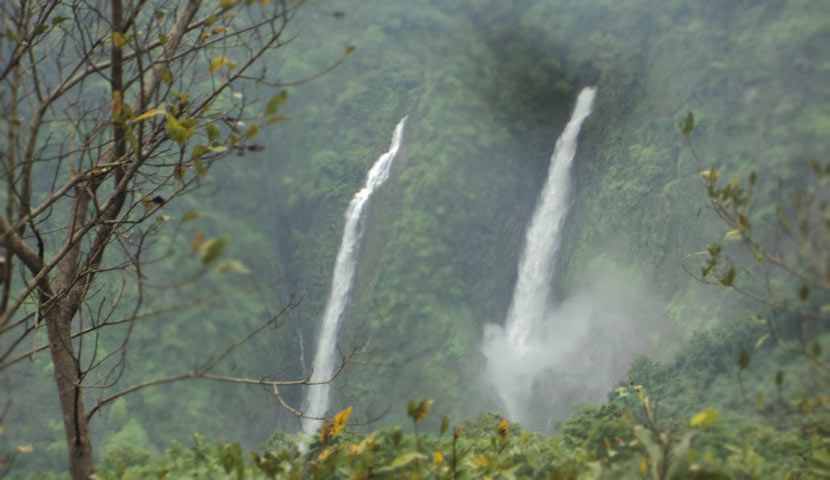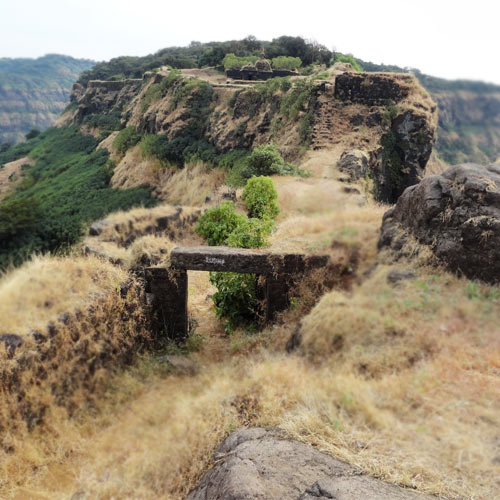Mangeli Waterfall

A Picturesque village named Mangeli at the eastern end Dodamarg Taluka as well as on the border of Karnataka state is a worth visiting sight. Its inspiring beauty attracts millions of tourist from whole the world.
The adventure of a road trip gives a wonderful opportunity to escape the frenetic rat race of the city life and reconnect with nature.
Riding through verdant landscape, lush greenery, waterfalls and taking in fresh air really can be a wonderful experience for all. Goans are gifted with this heavenly place which lies in Maharashtra but is as far as just 36 kms from Panjim.
There are several scenic spots on the way, where one can make a short halts. The splendid view amidst thick fog can make a fantastic backdrop for pictures. There is no railway station near to Mangeli in less than 10 km. Zarap Rail Way Station (near to Sawantwadi) , Sawantwadi Road Rail Way Station (near to Sawantwadi) , Thivim Rail Way Station (near to Mapusa) are the Rail way stations reachable from near by towns.
Paargad Fort

Paargad Fort is situated to the south of Kolhapur in Maharashtra state in India, at a distance of around 28km from Chandgad. One of the major attractions of this fort is its serene environment and lush green surroundings.
Apart from this, it is also known for housing a wonderful bronze statue of Shivaji and a temple of Bhagawati Bhawani. The gad can be trekked from the village morle and across Palye located in dodamarg taluka.
Fort was maintained by Raiba(Son of Tanaji Malusare).
This is one of the historically significant forts, Built by Chhatrapati Shivaji Maharaj in 1674 to 1676 AD, on adjoining borders of Kolhapur & Sindhudurg Districts. Structurally it looks like a conch-shell. The fort was suitable to keep watch on the movement of the enemy in Goa as well as Konkan. At first it was in charge of Tanaji Malusare, a faithful follower of King Shivaji and his son Rayaba, who successfully faced the attack made by Muajjam Sarkar, the Mughal Emperor Aurangzeb's son. As the fort remained undefeated it is called "Ajinkyatara" in South-India.
Today even there are local people who bear the surname "Malusare". The Pargad fort is yet shout enough with cannons and huge bastions in good position. There is a temple of Goddess Bhavani which is renovated twice. A wonderful thing to note about this temple is that the sun-rays directly touch the idol of the goddess throughout the year. There are 350 stone-steps leading to the highland of the Fort. Another wonder inside the fort is also worth mentioning. There are 5 lakes ever full of water that never get dried up. Thousands of tourists from Belgaum, Goa, Kolhapur and other places visit this fort.
Tillari Dam

The Tillari Irrigation Project is an inter-state project of Maharashtra and Goa States to utilise water of river Tillari. Tillari river is a west flowing river originating from Sahyadri mountain in Chandgad taluka of Kolhapur district of Maharashtra, crosses Maharashtra State near village Maneri to enter Goa State, where it is popularly known as Chapora, before falling into the Arabian Sea.
Tillari Irrigation Project envisages construction of a storage dam across river Tillari near village Tillariwadi (Sindhudurg district, Maharashtra) and a pick-up weir across Kharari nalla, a right bank tributary of river Tillari, near village Terwanmedhe (Sindhudurg district, Maharashtra) along with canal systems to provide irrigation facilities in 21,197 ha of command (6,676 ha (ICA) in Sindhudurg district of Maharashtra and 14,521 ha (ICA) in North Goa district of Goa). Besides irrigation, the project would provide 111.465 MCM of water for municipal and industrial uses in the State of Goa. In addition, two hydro power stations, one with 10 MW (2x5MW) installed capacity on the left side of the saddle dam and another with 0.2 MW installed capacity at head of the Right Bank Canal are also proposed. However, the power house of 10 MW capacity is a part of a separate project called Konal Hydro Electric Project.